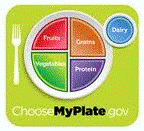Nutrition and Health Sciences, Department of
First Advisor
Dr. Weiwen Chai
Second Advisor
Dr. Linda Boeckner
Third Advisor
Dr. Georgia Jones
Date of this Version
Fall 11-30-2018
Citation
Angst, M.W., Chai, W., Boeckner, L., Jones, G, The Effect of Change in Middle School Lunchroom Setting on Student’s Intake of Broccoli
Abstract
Introduction: Over the past three decades, childhood obesity has more than doubled in children and quadrupled in adolescents. One possible solution to combating this growing epidemic is by making small changes to prevent obesity during childhood that will influence children to follow a healthy lifestyle into adulthood. The Smarter Lunchrooms Movement aims to increase healthy eating by incorporating low-cost to no-cost alterations to the school lunchroom in an effort to increase consumption of healthier foods by making them more attractive and convenient.
Purpose: This research study assessed broccoli consumption among 6th – 8th grade students in a selected community school system following a Smarter Lunchrooms classroom activity intervention focused on catchy and appealing vegetable marketing approaches outside the cafeteria. This study was designed to address how effective a classroom activity intervention is for 6th – 8th grade middle school students in terms of increasing their broccoli intake and decreasing plate paste.
Methods: The intervention focused on increasing the appeal of broccoli by creating catchy, appealing names and then displaying age-appropropriate signage highlighting these fun, interesting names for broccoli in the cafeteria. Two measures were used to track changes in food choice and consumption: (i) analysis of production and sales records and (ii) analysis of plate-waste. Data for both measurements were collected before and after the implementation of the intervention for both intervention schools and control schools.
Results: Following the intervention, the proportion of students who selected broccoli increased at the intervention schools and decreased at the control schools. Broccoli tray waste decreased at one intervention school, but not at the other. High-income schools had more broccoli sales post intervention compared to the low-income schools post intervention. In all schools post intervention production records showed a decrease compared to the pre-intervention records.
Conclusion and Implications: This study indicated that through a classroom intervention activity focused on increasing the appeal of broccoli by creating catchy, appealing names, it is possible to increase the selection of broccoli in 6th – 8th grade students, especially with the use of more interactive teaching methods. More research is needed to determine how to create behavior change and increase student consumption of broccoli in students.
Advisor: Weiwen Chai


Comments
A THESIS Presented to the Faculty of The Graduate College at the University of Nebraska In Fulfillment of the Requirements For the Degree of Master of Science, Major: Nutrition and Health Sciences, Under Supervision of Professors Weiwen Chai, Linda Boeckner, Georgia Jones. Lincoln, Nebraska: November 2018
Copyright (c) 2018 Mia Wood Angst